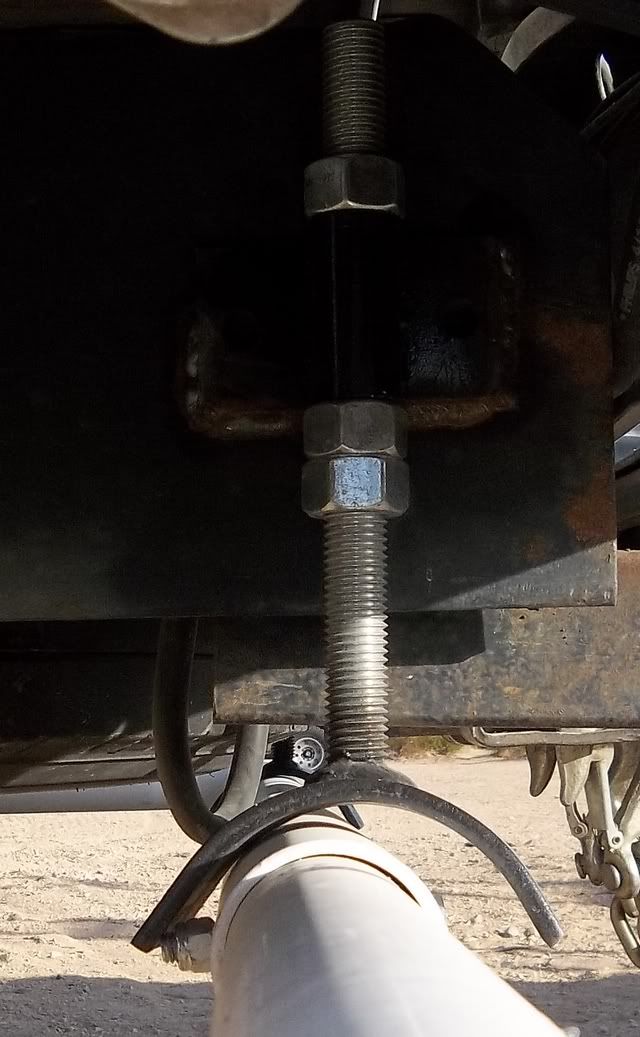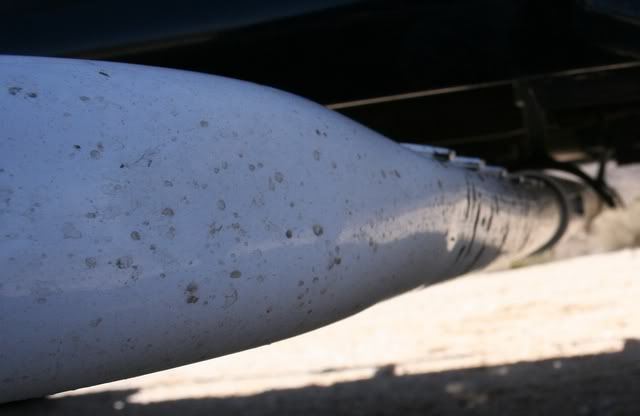FishPOET
Adventurer

My camper is a 1988 Lance and it has spent its whole life in Southern California and it is in very good condition for its age. I bought it with 4 Reico Titan hydraulic jacks on the corners. When I first got it it had dually swing out brackets on the front jacks. I have only ever put it on a single rear wheel truck and had no use for the swing out brackets. I actually left them on for a few loadings/unloadings and I did not like the camper movement they added to the process. My hats off to those of you with DRW trucks that have to use these.
I used the Reico Titan hydraulic jacks for approx 6 years. It is at least a 2 person job (better with 4 although I only had 3 other people helping once out of 50 loads) and we always pumped the front jacks in unison 10 times and then moved to the rear jacks. This process was repeated until the camper was high enough to drive under. The camper is very stable down low but as the camper rises on the jacks it starts becoming less steady. Bringing the camper down was always a challenge as we had to try to unscrew the hydraulic knobs the same amount to keep the camper lowering somewhat level.
I believe the weakness in the 4 corner jack system is that the bottoms of the jacks are not connected. For my application the jacks started to bend the brackets on the camper and the rear jacks would want to walk (move) during the loading/unloading process.
In the last year the loading/unloading process became more scary each time, so much so that I was leaving the camper on or off longer just because I didn't want to deal with the loading/unloading process.
I had always wanted electric jacks. I had read a lot of posts on rv.net and the Stablelift jack system was very highly spoken of with no negative reports. Even though the Stablelift system was quite a bit more expensive than 4 electric corner jacks I reasoned that I would have still had to repair or replace my bent corner brackets and it seemed like a wash.
There really isn’t much information on the Stablelift webpage. A few pictures, some FAQs and contact info.
I called Stablelift on 12-15-11 and got an answering machine. Later in the day Mont called me back. He explained they were offering $150.00 off if I ordered during the holidays. I asked him what the shipping time would be and he explained the motors were out of stock and it would be 4-6 weeks. Mont asked me what year and brand of camper and truck I would be using. (I assumed the Stablelift would be designed for my application. I would later find out how wrong I was) I placed the order and paid for the lift in full.
6 weeks later after not receiving a single phone call or email from StableLift I called back. I got the answering machine. Mont called me back and said the lift would be done one week later and then another week for shipping.
I called back one week later and got the answering machine. Mont called me back. Mont told me the StableLift was at the powdercoaters and it would ship in a few days. I told him I wanted the StableLift by Thursday 2-16-12 or I was going to cancel the order. He assured me I would have it.
Thursday 2-16-12 came and went and no call from Mont. I called him and got the answering machine. Mont called me back at 7pm on Thursday and said the Stablelift was in route. I eventually got the Stablelift on Tuesday 2-22-12.
I started to install the lift on Saturday 2-25-12. I read the instructions. They are not very well written. They put 30 thumbnail pictures on 2 pages. It would have been much easier to view the full size pictures either on paper or their webpage.
16 bolts (8 on each side) hold the Stable-Lift to the sides of the camper. I had to drill all 16 holes with a 3/8 bit into the ¼” steel plate. Not sure why 16 holes couldn’t have been drilled at the factory. Even if I had to drill a couple of holes to fit my particular application it would have made the job much easier for me.
The instructions don’t state anything about backing plates but two of the thumbnail pictures show backing plates. I initially installed the lift without any backing plates but it soon became painfully clear that I would have to reinstall with backing plates. Backing plates turned out to be the biggest nightmare of the job. I had to remove my battery box. I had to remove my city water inlet. (it had to be relocated) I had to remove my water heater. I had to remove my propane box. 6 of the bolts are under the dinette cushion and although the access was easy I had to custom make a backing plate that would not feel awkward under the dinette cushion.
I had to remove the bottom trim molding off the camper so the jacks would fit flush with the edge of the camper. Temporarily I have screwed the aluminum siding to the camper. I’ll have to find or fabricate new molding.
Once the jacks were attached to the camper an everything got put back in the camper it was time to start on the ground supports that tie the whole lift together. Once again I had to drill 16 3/8” holes. This time through steel tubing. 12 of these holes had to be drilled while laying under the truck. Once again I'm not sure why 16 holes couldn’t have been drilled at the factory. Even if I had to drill a couple of holes to fit my particular application it would have made the job much easier for me.
Then came the wiring. The electrical box is held in place with 4 screws. It only fits in one location and one of the screws hit a weld and broke. The wires coming out of the electrical box were 8”-12” long. If they had been 16” long the connections could have all been made inside the camper out of the weather. The 3 motors all had labels on them at one time. The labels were removed in Montana but all the sticky residue was left for me to clean. The black and brown wires were undistinguishable from each other. The electrical stuff is all small stuff but IMO all very unprofessional. The Stablelift system comes with 3 jacks. IMO it really needs 4 jacks. I assume that the extra motor/jack assembly was left out to save money?
The Stablelift system is designed (in theory) to utilize attachment points to the ground support system under your truck to keep the camper in place in the bed of your truck.


The ground support system puts downward force on the walls to hold the camper in place on the truck. My camper is built with wood framing. Nails and brads are one direction fasteners. As soon as the ground support system locked into place on the truck frame the walls started separating from the wings of the camper. The Stablelift system had to be removed and all the walls had to be screwed into the wings and backing plates. After reattaching the jack system for the third time it took me one trip out of the driveway to find out just how bad the ground support attachment system to the truck frame is in limiting sway. I attach my old turnbucles in the front of the camper to limit sway.
My overall view of the whole company and lift system is that it is unprofessional. I was and still am thoroughly disgusted with the lack of customer service. The lift works, but IMO for the cost of the product and for the production time involved it should have been custom built to my application. The installation directions are horrible and the fabrication after the fact to make the product work is frustrating. Installation time was approx 48 man hours
If I had to do it all over again I would have fabricated some ground supports for the 4 corner jacks that would have kept them from moving.
If you are at all interested in the Stablelift jack system I suggest you think about the following points:
Is your truck camper designed to be lifted from the sides/wings rather than the corners?
Most truck campers have reinforcement designed and built into the corners where the jacks will be mounted. The same design and/or reinforcement is not normally present where the Stablelift jack system attaches.
Most corner jacks provide 30” of up/down travel.
Stable Lift provides only 18” of up/down travel and you have to drive over a 2” tube to get under and out from under your camper.
Stablelift was designed for SRW trucks. I have 8-1/2" of plate under my camper for support. In a DRW application this gets reduced to approx 2". There are not any swing out jacks for DRW trucks. The motors are 3” in diameter and a DRW fender has to clear these motors. If you have a DRW truck and are considering the Stablelift jack system more than likely you will be wider than the national DOT standard of 102" and subject to "Wide Load" laws.
Last edited:
